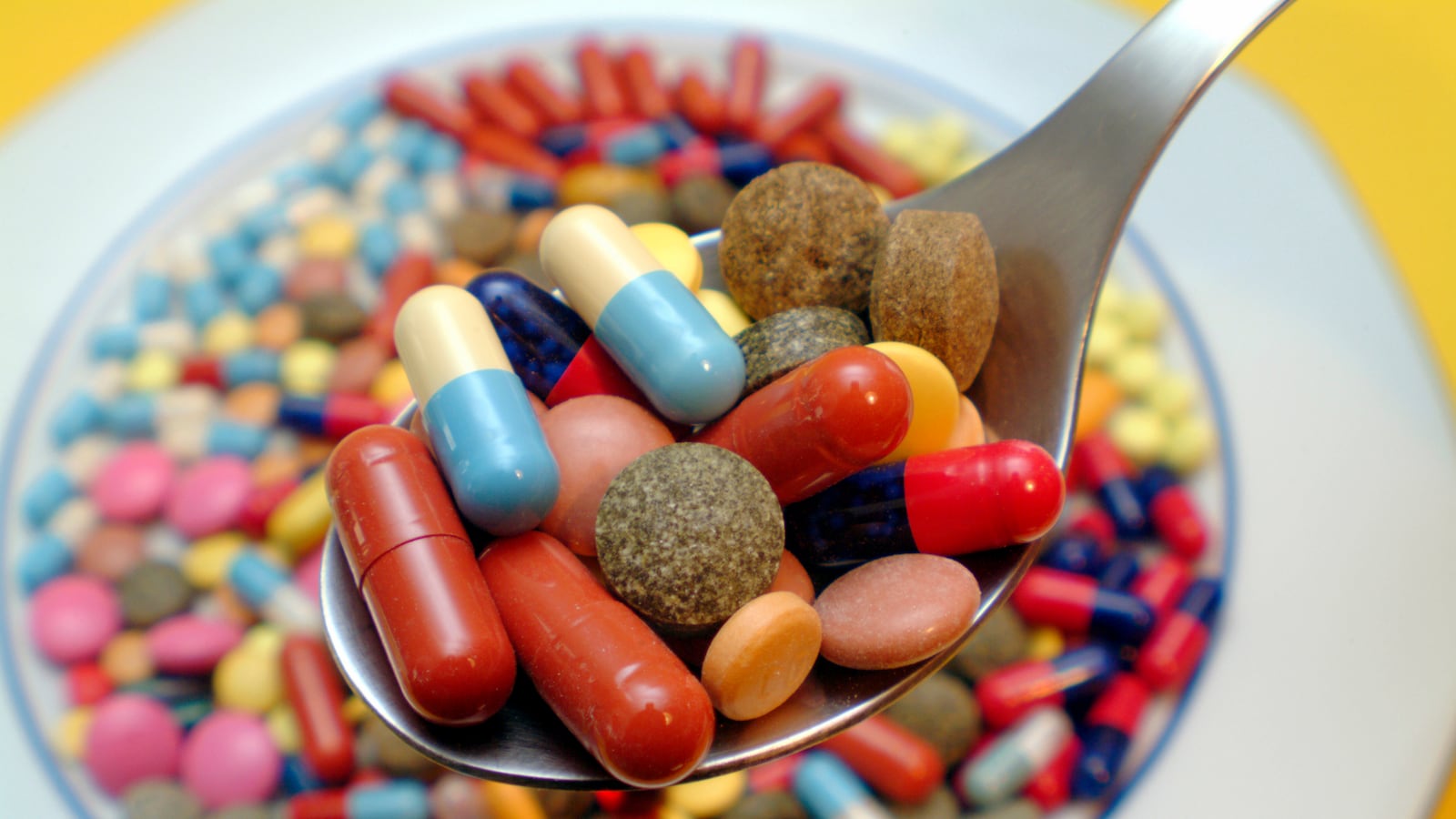By Perry Santanachote for Life by DailyBurn
You are never alone when you eat. With each bite, tens of trillions of gut microbes nosh with you. Most of these little guys are good bacteria, also called probiotics, keeping the bad bacteria in check — just one of their many roles. Gut flora influences health in many other ways, too, from helping to extract energy from food and building the body’s immune system to preventing obesity and protecting against infection.

When all is well, good bacteria should make up about 90 percent of your gut microbiota (the population of microbes living in your intestines). But factors like diet, stress, illness and medications can skew the ratio of good to bad and lead to disorders such as gastrointestinal distress, inflammation, eczema, a weakened immune system, diarrhea or constipation.
When this happens, adding an extra dose of good bacteria from a probiotic supplement helps bring harmony back to the belly. Fermented foods, such as yogurt, kimchi, sauerkraut, miso, kombucha and kefir all contain probiotics, though they don’t deliver quite the punch that a supplement would.
Unfortunately, finding the right one for your body isn’t as easy as it should be. There are thousands of different probiotic options on the market, all with varying potency and ingredients. And with tongue-twister names like Streptococcus thermophilus and Lactobacillus rhamnosus, how do you keep them straight, much less choose? With some help from the experts, we put together this guide to help you find the right probiotic for you.
Read the Label
Picking a probiotic is much more complicated than, say, picking a multivitamin. Robbyn E. Sockolow M.D., a chief gastroenterologist at NewYork-Presbyterian/Weill Cornell Medical Center, offers tips on how to read probiotic labels to understand what’s in the bottle.
Label information should always include:
° Genus, species and strain of the microorganisms (Lactobacillus reuteri ATCC55730, for example). Many products list only the genus and species, but different strains provide different benefits (more on that later).
° Number of organisms contained in a single dose and how often you should take it. Pick one that has at least seven strains, and five billion CFU (colony forming units).
° Storage information when relevant (some forms need to be refrigerated while others need a dark, cool space). Always keep probiotics away from moisture and heat.
° “Viable through end of shelf life” ensures the living microbes are in fact still living. Pass on the probiotic if the label says “viable at time of manufacture,” which means everything in it could be dead by the time it reaches your mouth. If you’re buying yogurt, look for “live and active cultures.
° Encapsulated pills or other delayed-rupture technology ensure the bacteria survive the trip through your acidic stomach and actually reach your colon.
° Certification by an independent third party. The Food and Drug Administration (FDA) does not regulate most probiotics (VSL#3 is one of the few that is regulated) and therefore the amount of bacteria stated on the label might not be what’s actually in there. Make sure it’s been tested.
Cure What Ails You
“Probiotics are the new vitamins,” says Shekhar Challa M.D., president of Kansas Medical Clinic and author of Probiotics for Dummies. While many people can benefit from probiotics for general health and wellbeing, Dr. Challa says, “they especially help those with immune problems, digestive problems or yeast infections.”
For daily maintenance, Dr. Challa suggests a probiotic with multiple strains of bacteria because the gut contains 30 to 40 kinds of strains—so the more the merrier. If you’re trying to treat a particular problem, make sure your probiotic contains the specific strains listed below that can combat what you’re battling.
The most common probiotic bacteria come from two genus groups: Lactobacillus or Bifidobacterium, although there are many others. Each group of bacteria has different species and each species have different strains (the “code” at the end). Researchers are still studying which strains should be used for which health conditions, but a handful have been demonstrated to help with the following:
If you’re traveling abroad … Don’t let Montezuma’s revenge get the best of you or your vacation. Taking Saccharomyces boulardii weeks before your trip may help prevent traveler’s diarrhea, which usually comes from ingesting food or water that’s been contaminated with bacteria.
If you’re lactose intolerant … Lactobacillus bulgaricus, Lactobacillus acidophilus and Streptococcus thermophilus produce the enzyme lactase that helps the gut digest and absorb lactose.
If you have irritable bowel syndrome (IBS) or gastrointestinal distress … Bifidobacterium infantis 35624, Lactobacillus plantarum 299V or Bifidobacterium bifidum MIMBb75 have been shown to help regulate bowel movements and relieve bloating, pain and gas. More research is needed to determine which other probiotics might help treat IBS.
If you’re taking antibiotics … These drugs wipe out the bacteria in your body — the good with the bad — leaving you susceptible to diarrhea or infections. Taking a probiotic can help prevent this. Both Dr. Sockolow and Challa recommend taking Lactobacillus rhamnosus GG and/or Saccharomyces boulardii six hours after each dose of antibiotics. Increase the dose to 10 billion CFUs per day and continue for one to two weeks after you stop taking the antibiotic.
If you have eczema … Lactobacillus rhamnosus HN001 and Lactobacillus fermentum VRI-003 PCC have been shown to help treat those itchy, scaly skin rashes — especially in children.
If you have a cold … Some research suggests that Bifidobacterium animalis lactis Bi-07 and Lactobacillus acidophilus NCFM can help reduce the duration and severity of the common cold and flu by enhancing the body’s production of antibodies.
If you have a vaginal infection … Lactobacillus acidophilus, Lactobacillus rhamnosus GR-1 and Lactobacillus reuteri RC-14 have been shown to help prevent and clear up bacterial vaginosis and urinary tract infections in some individuals. Researchers point to Lactobacillus reuteri RC-14 and Lactobacillus rhamnosus GR-1 as the most effective stains to protect against yeast infections as they’re especially adept at colonizing the vaginal environment and fighting off unwelcome bacteria and fungi.
If you have bad breath, gingivitis or periodontitis … A probiotic lozenge or mouthwash might be your best bet. Lactobacillus reuteri LR-1 or LR-2 promote oral health by binding to teeth and gums, preventing plaque formation in the mouth. Research has demonstrated the ability of Weissella cibaria to freshen breath by inhibiting the production of sulfur compounds in the mouth.
Feed Your Flora
Now that you’ve got the right probiotics in your gut, it’s important to keep them just as strong and healthy as they’ll make you. The bacteria in your colon thrive on nondigestible fiber, also known as prebiotics. Feed your bacteria with two to four servings of garlic, whole grains, artichokes, bananas or honey so they’ll be happy campers. Some probiotic supplements come with prebiotics in them, but know that they’re usually listed as inulin.
“Bacteria in the belly love fiber,” says Sockolow. “They break it down, leaving behind nourishing acids in the process, so it’s a win-win.” Try getting at least 38 grams of fiber a day from fruits, vegetables and legumes, Sockolow recommends.
Real Deal Probiotics
When you’re ready to hit the health care aisle, just be sure not to be duped. Consumer Lab, an independent agency that tests vitamins and supplements, found that 30 percent of probiotic products didn’t contain the amount of viable bacteria claimed on the label. The full report is available for $18 and includes cost value as well, which can be helpful, considering probiotics are one of the most expensive supplements out there, averaging nearly $1 per day and as much as $6 per day.
Whether you’re looking to clear up an infection, boost your immune system or simply better your health, a daily probiotic supplement can be your best ally. A little research goes a long way in ensuring you get a good quality product, and when in doubt, check with your doctor to be sure you find the right one for you.
More From DailyBurn:






